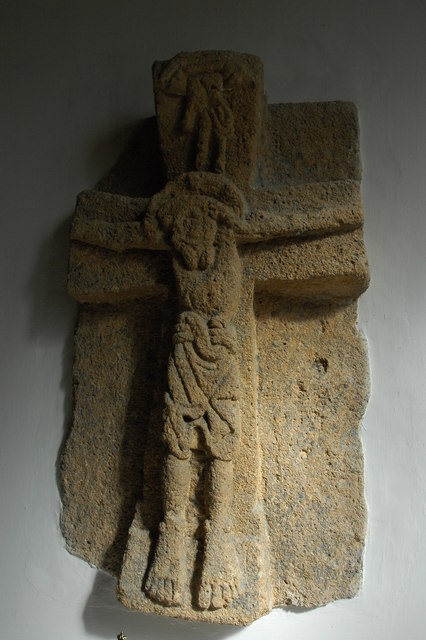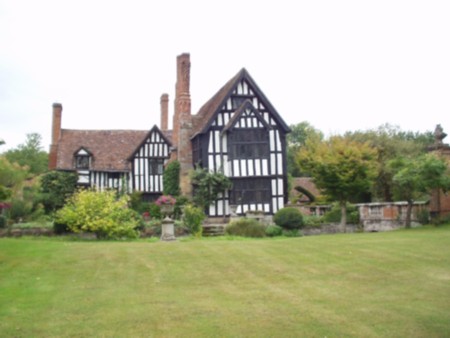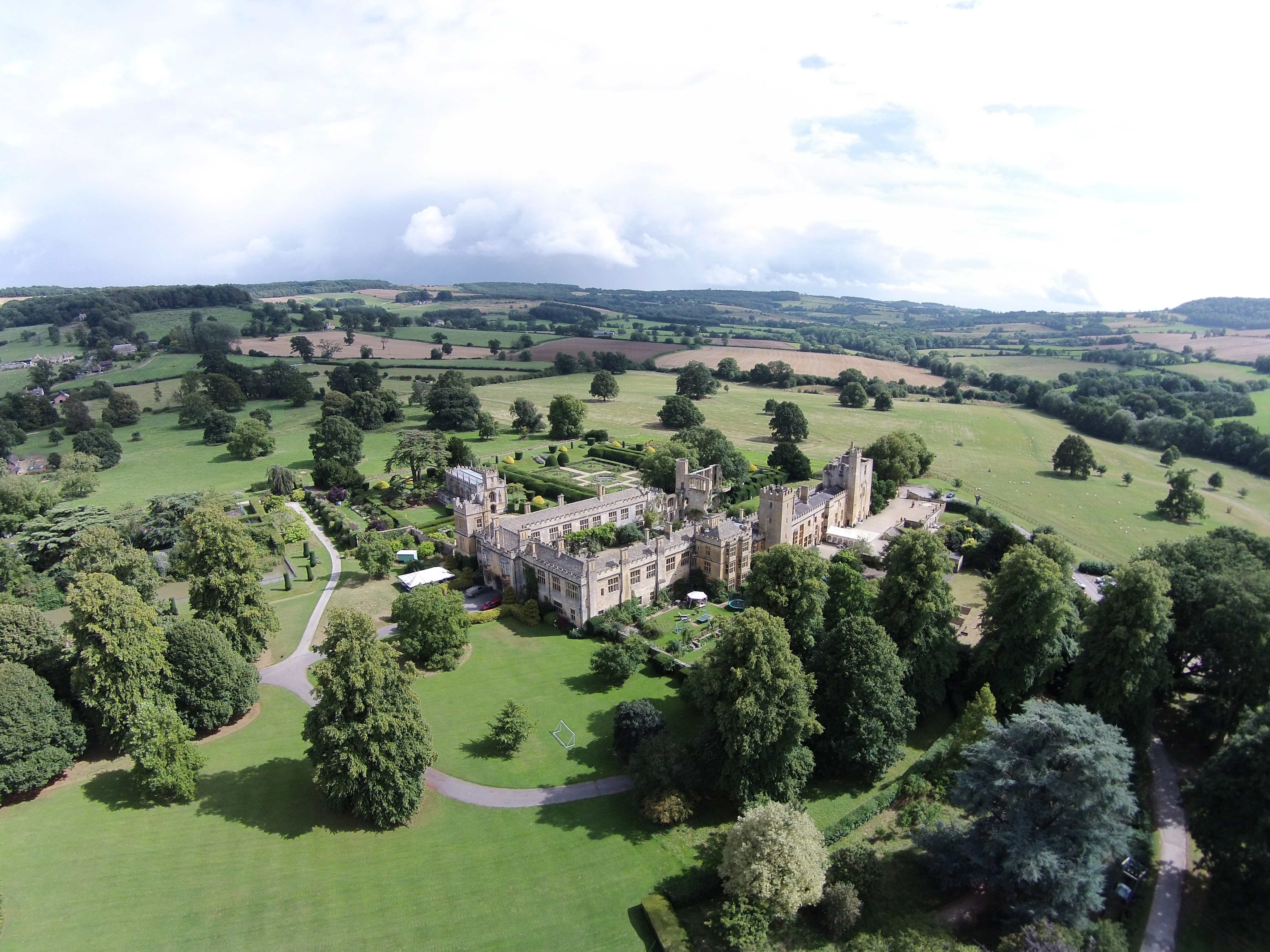|
St Kenelm's Trail
St Kenelm’s Trail is a walk originally devised by John Price, which links the two places most commonly associated with the legend of St Kenelm. These are the Clent Hills, south of Birmingham, identified as the scene of his supposed murder and the small Gloucestershire town of Winchcombe, near Cheltenham where his body was eventually interred. This trail links these places and recalls the journey recorded as being taken by the monks of St. Peter's Abbey, Winchcombe, with the Saint's remains. It is a journey which visits several ancient villages and passes by many places of historic interest such as the picturesque, historic yet obscure Huddington Court and concludes with a spectacular finish through the grounds of the more famous Sudeley Castle Sudeley Castle is a Grade I listed castle in the parish of Sudeley, in the Cotswolds, near to the medieval market town of Winchcombe, Gloucestershire, England. The castle has 10 notable gardens covering some 15 acres within a 1,200 ... [...More Info...] [...Related Items...] OR: [Wikipedia] [Google] [Baidu] |
Saint Kenelm
Saint Kenelm (or Cynehelm) was an Anglo-Saxons, Anglo-Saxon saint, venerated throughout medieval England, and mentioned in the ''Canterbury Tales'' (The Nun's Priest's Tale, lines 290–301, in which the cockerel Chauntecleer tries to demonstrate the reality of prophetic dreams to his wife Pertelote). William of Malmesbury, writing in the 12th century, recounted that "there was no place in England to which more pilgrims travelled than to Winchcombe on Kenelm's feast day". In legend, St Kenelm was a member of the royal family of Mercia, a boy king and martyr, murdered by an ambitious relative despite receiving a prophetic dream warning him of the danger. His body, after being concealed, was discovered by miraculous intervention, and transported by the monks of Winchcombe to a major shrine. There it remained for several hundred years. The two locales most closely linked to this legend are the Clent Hills, south of Birmingham, England, identified as the scene of his murder, and the ... [...More Info...] [...Related Items...] OR: [Wikipedia] [Google] [Baidu] |
Clent Hills
The Clent Hills lie south-west of Birmingham city centre in Clent, Worcestershire, England. The closest towns are Stourbridge and Halesowen, both in the West Midlands conurbation (and also Historic counties of England, historically in Worcestershire). The Clent Hills range consists of, in order from north-west to south-east: Wychbury Hill, Clent Hill (and Adams Hill), and Walton Hill (and Calcot Hill). The north Worcestershire range of hills continues eastwards to include Romsley, Worcestershire, Romsley Hill, Waseley Hills Country Park, Waseley Hills and the Lickey Hills. Clent Hill is the most popular hillwalking hill in the range, although it is not often mentioned because the whole area is referred to as Clent Hills. Just under a million visitors a year are estimated to come to the hills, making them Worcestershire's most popular non-paying attraction. Geology The Clent Hills are a major outcrop of the Clent Formation consisting of Clent Breccia (predominantly a red-brown ... [...More Info...] [...Related Items...] OR: [Wikipedia] [Google] [Baidu] |
Birmingham
Birmingham ( ) is a city and metropolitan borough in the metropolitan county of West Midlands in England. It is the second-largest city in the United Kingdom with a population of 1.145 million in the city proper, 2.92 million in the West Midlands metropolitan county, and approximately 4.3 million in the wider metropolitan area. It is the largest UK metropolitan area outside of London. Birmingham is known as the second city of the United Kingdom. Located in the West Midlands region of England, approximately from London, Birmingham is considered to be the social, cultural, financial and commercial centre of the Midlands. Distinctively, Birmingham only has small rivers flowing through it, mainly the River Tame and its tributaries River Rea and River Cole – one of the closest main rivers is the Severn, approximately west of the city centre. Historically a market town in Warwickshire in the medieval period, Birmingham grew during the 18th century during the Midla ... [...More Info...] [...Related Items...] OR: [Wikipedia] [Google] [Baidu] |
Gloucestershire
Gloucestershire ( abbreviated Glos) is a county in South West England. The county comprises part of the Cotswold Hills, part of the flat fertile valley of the River Severn and the entire Forest of Dean. The county town is the city of Gloucester and other principal towns and villages include Cheltenham, Cirencester, Kingswood, Bradley Stoke, Stroud, Thornbury, Yate, Tewkesbury, Bishop's Cleeve, Churchdown, Brockworth, Winchcombe, Dursley, Cam, Berkeley, Wotton-under-Edge, Tetbury, Moreton-in-Marsh, Fairford, Lechlade, Northleach, Stow-on-the-Wold, Chipping Campden, Bourton-on-the-Water, Stonehouse, Nailsworth, Minchinhampton, Painswick, Winterbourne, Frampton Cotterell, Coleford, Cinderford, Lydney and Rodborough and Cainscross that are within Stroud's urban area. Gloucestershire borders Herefordshire to the north-west, Worcestershire to the north, Warwickshire to the north-east, Oxfordshire to the east, Wiltshire to the south, Bristol and Somerset ... [...More Info...] [...Related Items...] OR: [Wikipedia] [Google] [Baidu] |
Winchcombe
Winchcombe () is a market town and civil parish in the Borough of Tewkesbury in the county of Gloucestershire, England, it is 6 miles north-east of Cheltenham. The population was recorded as 4,538 in the 2011 census and estimated at 5,347 in 2019. The town is located in the Cotswolds and has many features and buildings dating back to medieval times. History The Belas Knap Neolithic long barrow on Cleeve Hill above Winchcombe, dates from about 3000 BCE. In Anglo-Saxon times, Winchcombe was a major community in Mercia, favoured by King Coenwulf of Mercia, the others being Lichfield and Tamworth. In the 11th century, the town was briefly the county town of Winchcombeshire. The Anglo-Saxon St Kenelm, said to be a son of Coenwulf, is believed to be buried here. During the Anarchy of the 12th century, a motte-and-bailey castle was built in the early 1140s for Empress Matilda, by Roger Fitzmiles, 2nd Earl of Hereford, but its exact site is unknown. It has been suggested i ... [...More Info...] [...Related Items...] OR: [Wikipedia] [Google] [Baidu] |
Cheltenham
Cheltenham (), also known as Cheltenham Spa, is a spa town and borough on the edge of the Cotswolds in the county of Gloucestershire, England. Cheltenham became known as a health and holiday spa town resort, following the discovery of mineral springs in 1716, and claims to be the most complete Regency town in Britain. The town hosts several festivals of culture, often featuring nationally and internationally famous contributors and attendees; they include the Cheltenham Literature Festival, the Cheltenham Jazz Festival, the Cheltenham Science Festival, the Cheltenham Music Festival, the Cheltenham Cricket Festival and the Cheltenham Food & Drink Festival. In steeplechase horse racing, the Gold Cup is the main event of the Cheltenham Festival, held every March. History Cheltenham stands on the small River Chelt, which rises nearby at Dowdeswell and runs through the town on its way to the Severn. It was first recorded in 803, as ''Celtan hom''; the meaning has not been resol ... [...More Info...] [...Related Items...] OR: [Wikipedia] [Google] [Baidu] |
Monk
A monk (, from el, μοναχός, ''monachos'', "single, solitary" via Latin ) is a person who practices religious asceticism by monastic living, either alone or with any number of other monks. A monk may be a person who decides to dedicate their life to serving other people and serving God, or to be an ascetic who voluntarily chooses to leave mainstream society and live their life in prayer and contemplation. The concept is ancient and can be seen in many religions and in philosophy. In the Greek language, the term can apply to women, but in modern English it is mainly in use for men. The word ''nun'' is typically used for female monastics. Although the term ''monachos'' is of Christian origin, in the English language ''monk'' tends to be used loosely also for both male and female ascetics from other religious or philosophical backgrounds. However, being generic, it is not interchangeable with terms that denote particular kinds of monk, such as cenobite, hermit, anchor ... [...More Info...] [...Related Items...] OR: [Wikipedia] [Google] [Baidu] |
Winchcombe Abbey
Winchcombe Abbey is a now-vanished Benedictine abbey in Winchcombe, Gloucestershire; this abbey was once in the heart of Mercia, an Anglo Saxon kingdom at the time of the Heptarchy in England. The Abbey was founded c. 798 for three hundred Benedictine monks, by King Offa of Mercia or King Coenwulf of Mercia. In its time, it was the burial place of two members of the Mercian ruling class, the aforementioned Coenwulf and his son Cynehelm, later venerated as Saint Kenelm.''Victoria County History, Gloucestershire'', ii, 66-72 According to more recent research, the original foundation by Offa in 787 was for a community of nuns, to which Coenwulf added a community of men in 811 to create a double monastery. The nunnery ceased to exist sometime after 897. The abbey was refounded in ... [...More Info...] [...Related Items...] OR: [Wikipedia] [Google] [Baidu] |
Saint
In religious belief, a saint is a person who is recognized as having an exceptional degree of Q-D-Š, holiness, likeness, or closeness to God. However, the use of the term ''saint'' depends on the context and Christian denomination, denomination. In Catholic Church, Catholic, Eastern Orthodox Church, Eastern Orthodox, Anglican Communion, Anglican, Oriental Orthodox, and Lutheranism, Lutheran doctrine, all of their faithful deceased in Heaven are considered to be saints, but some are considered worthy of greater honor or emulation. Official ecclesiastical recognition, and consequently a public cult of veneration, is conferred on some denominational saints through the process of canonization in the Catholic Church or glorification in the Eastern Orthodox Church after their approval. While the English word ''saint'' originated in Christianity, History of religion, historians of religion tend to use the appellation "in a more general way to refer to the state of special holiness t ... [...More Info...] [...Related Items...] OR: [Wikipedia] [Google] [Baidu] |
Huddington Court
Huddington Court is a 15th-century moated manor house in the village of Huddington in Worcestershire, England, some six miles east of Worcester. It was described by Sir Nikolaus Pevsner as 'the most picturesque house in Worcestershire'. It was the home of the Wintour family, of which the Gunpowder plot conspirators Robert, Thomas and John Wintour are the most notorious. The house is a private residence and is not open to the public. It has been Grade I listed on the National Heritage List for England since 1952. The Gunpowder Plot The plans of the Gunpowder Plot to blow up the Houses of Parliament in 1605 were, partially, conceived in Huddington Court. Two priest holes are in the building. One is behind an oak panel in what was the chapel, where mass was said by the resident priest. The main section of the hole has another door which leads to a small room where the priest would not have wanted to suffer from claustrophobia! The other hiding hole is in the room opposite and i ... [...More Info...] [...Related Items...] OR: [Wikipedia] [Google] [Baidu] |
Sudeley Castle
Sudeley Castle is a Grade I listed castle in the parish of Sudeley, in the Cotswolds, near to the medieval market town of Winchcombe, Gloucestershire, England. The castle has 10 notable gardens covering some 15 acres within a 1,200-acre estate nestled within the Cotswold hills. Building of the castle began in 1443 for Ralph Boteler; the Lord High Treasurer of England, on the site of a previous 12th-century fortified manor house. It was later seized by the crown and became the property of King Edward IV and King Richard III, who built its famous banqueting hall. King Henry VIII and his then wife Anne Boleyn visited the castle in 1535; and it later became the home and final resting place of his sixth wife, Catherine Parr who remarried after the king's death. Parr is buried in the castle's church, making Sudeley the only privately owned castle in the world to have a Queen of England buried in its grounds. Sudeley soon became the home of the Chandos family, and the castle was ... [...More Info...] [...Related Items...] OR: [Wikipedia] [Google] [Baidu] |
.jpg)








